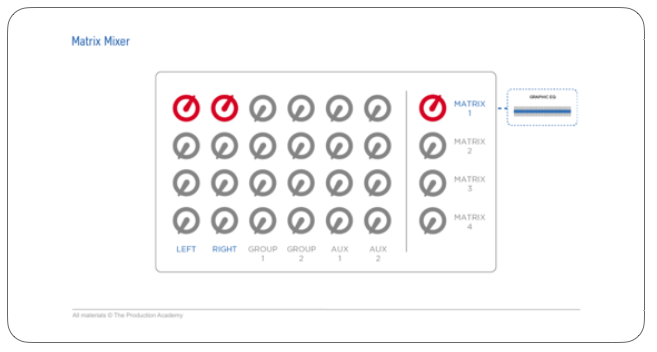022 – Matrix Mixer
A Matrix lets you mix your output busses.
Written by Scott Adamson
I got an email the other day asking for an explanation of a Matrix. This seems to come up fairly often when talking about consoles and routing!
Check out this video from our Live Sound Essentials course:
We generally talk about our consoles having inputs and outputs. The mics, DIs, and other inputs come into the channel strips, and then we send mixes to Auxes, Subgroups, or the Main Mix, each of which is an output buss.
And if we want to create a separate mix using those outputs, we use a Matrix. So, the output busses are actually the inputs of the Matrix. This lets us make mixes using our mixes!
Get real-world live sound mixing tips straight to your inbox.
It also just lets us use one mix for multiple outputs. For example, if we are using our Left-Right mix to feed the main speakers, we could also send that mix to a Matrix, which can then be sent on to something like a front fill. This gives us separate fader control over that level.
And, since a Matrix is also an output buss, we can insert things like EQ on it. So, even though we’re using the same mix as the main speakers, we can have separate fader and EQ control for the front fills.
Of course, the routing can get way more complicated than this and Matrices can be used for any number of applications. They’re good for recording or for feeding multiple sets of speakers, which happens a lot in theater productions. And, of course, the options tend to be far more robust in digital consoles than analog.




